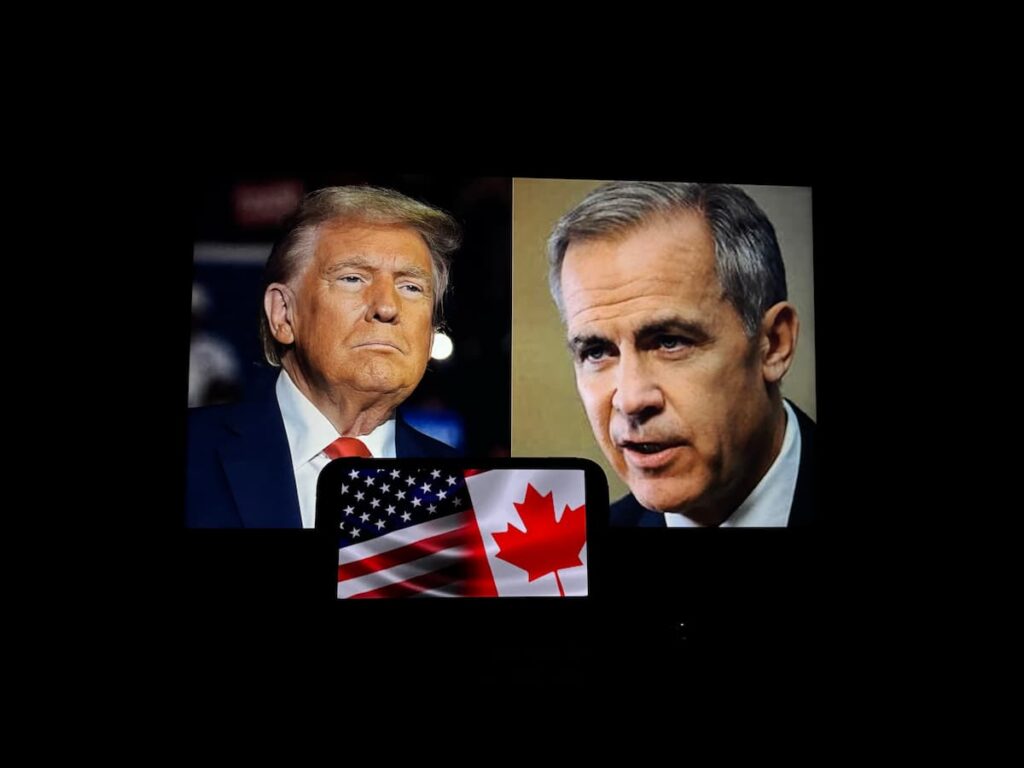A High-Stakes Encounter at the White House
Canada’s newly elected Prime Minister Mark Carney arrived in Washington for a critical meeting with U.S. President Donald Trump. With relations between the two nations at one of their most strained points in recent memory, the face-to-face marks the beginning of a new, uncertain chapter in North American diplomacy.
Carney, who campaigned on a strong platform to defend Canada’s interests against mounting U.S. tariffs and nationalistic rhetoric, now steps into the spotlight to deliver on that promise. The stakes are high: the trade war has intensified, and hopes for a quick resolution are slim. Despite public expectations, Carney has intentionally kept the bar low for this first meeting, signaling that rebuilding trust and cooperation will take time and persistence.
While the Canadian leader’s visit is being framed as an initial step toward repairing fractured ties, much of the focus is on whether any meaningful progress can be made under the current climate. The previous economic and security arrangements between the two countries have effectively dissolved, and both sides acknowledge that a new framework must be negotiated from scratch.
A Fragile Relationship
The backdrop to this meeting is a deteriorating relationship filled with antagonism and conflicting narratives. Trump has persistently levied punitive tariffs on Canadian exports and has gone as far as to suggest that Canada could become part of the United States—a notion Carney has firmly rejected.
Despite trade data showing that the U.S. remains heavily dependent on Canadian goods, including millions of barrels of oil daily, Trump has downplayed that reliance. In turn, Carney is navigating a diplomatic minefield—balancing firm defense of Canadian sovereignty while avoiding confrontation that could trigger further economic damage.
This first encounter is widely seen as a strategic introduction more than a negotiation. Private time between Carney and Trump has been scheduled beyond public view, offering a chance for candid conversation and potential groundwork for future discussions. Yet, observers caution that any movement on key issues—such as tariffs and border policy—will be slow and fraught with political calculation.
The Team Behind the Mission
Supporting Carney is a trio of senior cabinet ministers with deep involvement in Canada-U.S. relations. The International Trade Minister, the Foreign Affairs Minister, and the Public Safety Minister are all actively engaged in managing the fallout from tensions that began escalating after the last U.S. presidential election.
Each minister brings a direct line of communication with high-ranking U.S. officials. These relationships are crucial, especially as the U.S. administration continues to use tariffs not just as leverage, but as a key component of its economic policy. From efforts to appease U.S. concerns over border security and fentanyl trafficking—despite evidence showing Canada is not a major source—to navigating harsh public comments from American officials, the Canadian delegation faces multiple fronts of pressure.
The tone from the U.S. side remains mixed. While some American officials have used inflammatory language to describe Canada’s policies and government, Trump himself has recently softened his stance toward Carney personally. This shift offers a small opening for dialogue, though it remains unclear how long that goodwill will last or whether it can be translated into policy change.
A Long Road Ahead
The broader goal for Carney’s administration is to negotiate a renewed trilateral trade agreement that includes the U.S. and Mexico. With the current agreement nearing a critical review period, the timing of these talks is sensitive. Experts suggest that moving too quickly to strike a deal could leave Canada at a disadvantage, particularly given the perception that the U.S. holds more leverage in the current environment.
Carney’s approach reflects both caution and resilience. He is expected to maintain a firm but diplomatic posture, signaling that Canada will not yield to threats or rapid demands. At the same time, the new prime minister must also avoid potential ambushes or public embarrassments that have plagued other foreign leaders visiting the White House under Trump’s leadership.
Observers agree that a single meeting is unlikely to resolve deep-rooted disputes. However, it sets the stage for what could become a series of critical negotiations aimed at stabilizing one of the world’s most significant cross-border relationships.
As the dust settles from this first encounter, the focus will turn to whether Canada can navigate the volatility of Trump’s administration while safeguarding its national interests and rebuilding a working partnership. For now, the world watches as Carney begins his diplomatic test under the harsh spotlight of Washington politics.



